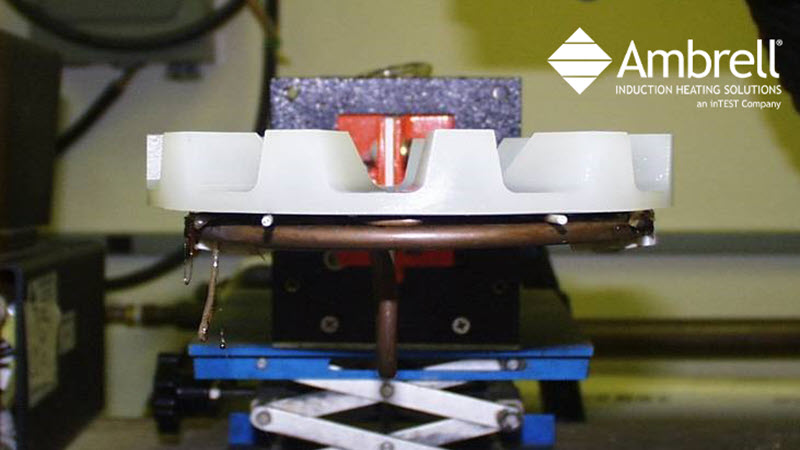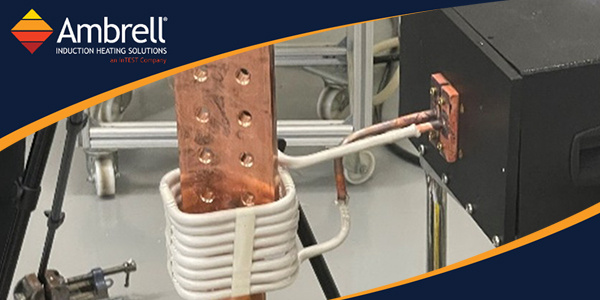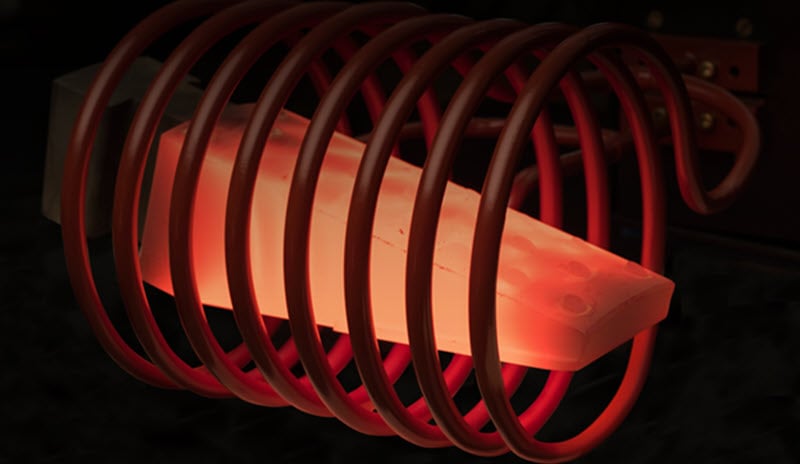How Researchers and Universities Use Induction Heating
Induction heating, a process that uses electromagnetic induction to heat electrically conductive materials, is often thought of for large industrial...
Applications
Applications: More
Applications: More

Industries:
Industries: More
Industries: More
Industries: More

Products:
Products: More
Services: More

Learn:
Learn: More
About:


A client came to THE LAB at Ambrell with an application that involved removing urethane from a steel insert (doffer pad).
More induction bonding application notes
THE LAB determined that an Ambrell EASYHEATTM 10 kW, 150-400 kHz solid state induction heating system would work well for this debonding application along with a workhead and coil specifically designed for this application. The assembly needed to be heated to 800 ºF (427 ºC) with the frequency set to 207 kHz.
Initial tests were conducted to optimize the power delivered to the assembly. A three-turn pancake style coil was used to de-bond urethane from the steel disc. The part was placed onto two 0.10” (2.5 mm) thick ceramic rods on top of the coil and heated for 15 seconds. The urethane began to de-bond from the steel and was removed from the steel by hand. This company was using a mesh rack in a burn-off oven but wanted to see if induction might be a superior method for their debonding application.
There were several benefits to switching to induction heating for this doffer pad debonding application. Induction only delivers heat where it is needed and when it is necessary, making it more efficient than an oven. It also delivers consistent and repeatable heating. Induction is also a rapid method of heating, which can increase throughput.
If you have an application that might benefit from complementary parts testing, contact THE LAB to take advantage of this service from our knowledgeable and experienced applications team. Additionally, we have Virtual Lab Service so you can observe testing live from your office. And, whether you choose Virtual Lab Service or not, we'll always send you a video and lab report after testing so you can assess the results and see if induction is the right fit for your heating application.

Induction heating, a process that uses electromagnetic induction to heat electrically conductive materials, is often thought of for large industrial...

Objective A company had been using a flame for brazing copper assemblies to make electrical components, but they contacted THE LAB at Ambrell because...

Induction heating is a highly efficient and versatile technology with numerous industrial applications. Unlike traditional heating methods that rely...